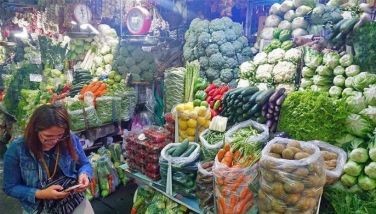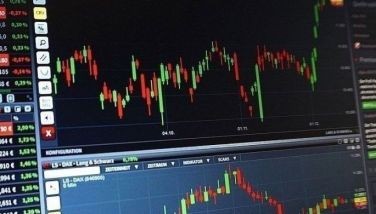Grocery shopping in a changing landscape

One of the most changed sectors in the retail industry is grocery shopping, and this has been brought about firstly by the pandemic lockdowns, followed by global supply chain disruptions that caused unprecedented price hikes of certain staples, and finally, advancement in artificial intelligence platforms that go beyond ordering and paying.
The pandemic allowed consumers to fiddle with and learn online shopping apps, forcing many supermarkets and groceries to widen their services to serve these new-found shoppers’ preferences.
High and prolonged inflation on food commodities caused by global supply chain disruptions, including Russia’s invasion of Ukraine, prompted many consumers to be more conscious of prices. Conversely, it spawned a preference for house brands and warehouse shopping offering considerable discounts on food and other retail essentials.
Then, with marked advances in chatbots in the last six months, retailing managers worth their salt are coming up with innovative improvements to keep their customers loyal on both in-store and e-commerce grounds.
In many advanced economies, this shifting landscape has brought about some marked and rather radical changes in supermarket and grocery shopping. Some supermarkets, and even mid-sized grocery stores, have made hand-scanners available for customers who have acknowledged the conveniences offered by a scan-and-go system.
Of course, this is still in its infancy stage, especially after some retailers noted stealing by some consumers who are exploiting the weaknesses of the system by willfully neglecting to scan items. Still, the prospects seem to weigh in favor of wider adoption.
Grocer apps
In the Philippines, the biggest change most apparent is still in supermarkets and grocery chains that have adopted an online ordering system, usually through third party systems like Grab, where the latter gets a percentage of sales while taking care of delivery.
For now, more noticeable are check-out counters dedicated to online order partners, which are usually supported by online order-taking store personnel who literally push a grocery cart that’s filling up with items identified on the customer’s online order list. Kinda crude, but we can expect these to gain more sophistication in future.
Such a trend is foreseeable given the growing appetite of consumers for grocery shopping apps that offer more conveniences. Imagine listing down a milk brand in your grocery app and up pops a notice of a discount if two or more are bought.
More households now pre-order their staples, from rice, bread, canned goods, detergents, and other home necessities by just tapping on menus and paying online. Without even stepping inside a grocery or supermarket, they get their goods delivered to their doorsteps.
Warehouse and house brands
In response to high inflation that has continued to dog consumers for over a year now, supermarkets are strengthening their house brands that offer goods at lower prices than the same products that come from big manufacturing companies.
Usually, house brands are possible by contracting third party suppliers who source raw materials and package them for the supermarket or grocery chain. In the Philippines, where consumer spending reigns, shoppers have realized that house brands are not necessarily inferior than branded competitors.
House brands get their price edge through negligible advertising, marketing, and packaging spend. Supermarket and grocery chains have dedicated personnel that weigh on the merits of bringing certain consumer items into the house brand portfolio, which competes not just with private labels, but also wet markets.
The pandemic has offered an opportunity for supermarkets and groceries to strengthen house brands that deliver quality products, but at still affordable (sometimes cheaper) prices that a rising middle class is now starting to value in lieu of the bother of going to the wet market.
Local retailers are also exploiting tie-ups with bigger global house brands that are able to bring in markedly lower prices of basic commodities despite freighting costs. Such global house brands, like DFI Retail Group, have long developed their own supply chain networks to enable them to operate with the least disruptions to both product inventories and prices.
Healthy foods
One factor that retailers are closely monitoring is the selection by consumers of ecologically sustainable and healthy products, emphasizing on less processing and more on fresh. Whereas households more than a decade ago preferred canned meats, the freezer section has been expanding with cooked meals blast-frozen to retain freshness without the help of chemical preservatives.
Organic products are also more prominently displayed or advertised, boasting of vegetables, livestock, and even grains that are grown without the help of chemical pesticides and fertilizers.
A growing awareness by consumers of the dangers of commercial agricultural and manufacturing processes that have been linked with illnesses like cancer, hypertension, and diabetes, is also reshaping many of the foods available on supermarket and grocery shelves.
Lifestyle preferences, especially of young people who will dictate tomorrow’s economic activities, are likewise being considered. How strong their passion for simple uncomplicated living, as opposed to the money-accumulating goals of middle-aged and older generations, is still something that is being assessed for its longer-term effect.
In fact, how the next generation consumers, Generation Z and Alpha, will think and behave has ramifications on almost every economic aspect of life on earth, from the doctrine of industrialization to the advocacy of environmental sustainability and survival.
More young people today are questioning the excesses of previous generations, who they accuse of warping basic human values that have bred materialism, caused wars, and caused the widening gap between the rich and the poor.
Facebook and Twitter
We are actively using two social networking websites to reach out more often and even interact with and engage our readers, friends and colleagues in the various areas of interest that I tackle in my column. Please like us on www.facebook.com/ReyGamboa and follow us on www.twitter.com/ReyGamboa.
Should you wish to share any insights, write me at Link Edge, 25th Floor, 139 Corporate Center, Valero Street, Salcedo Village, 1227 Makati City. Or e-mail me at [email protected]. For a compilation of previous articles, visit www.BizlinksPhilippines.net.
- Latest
- Trending





























